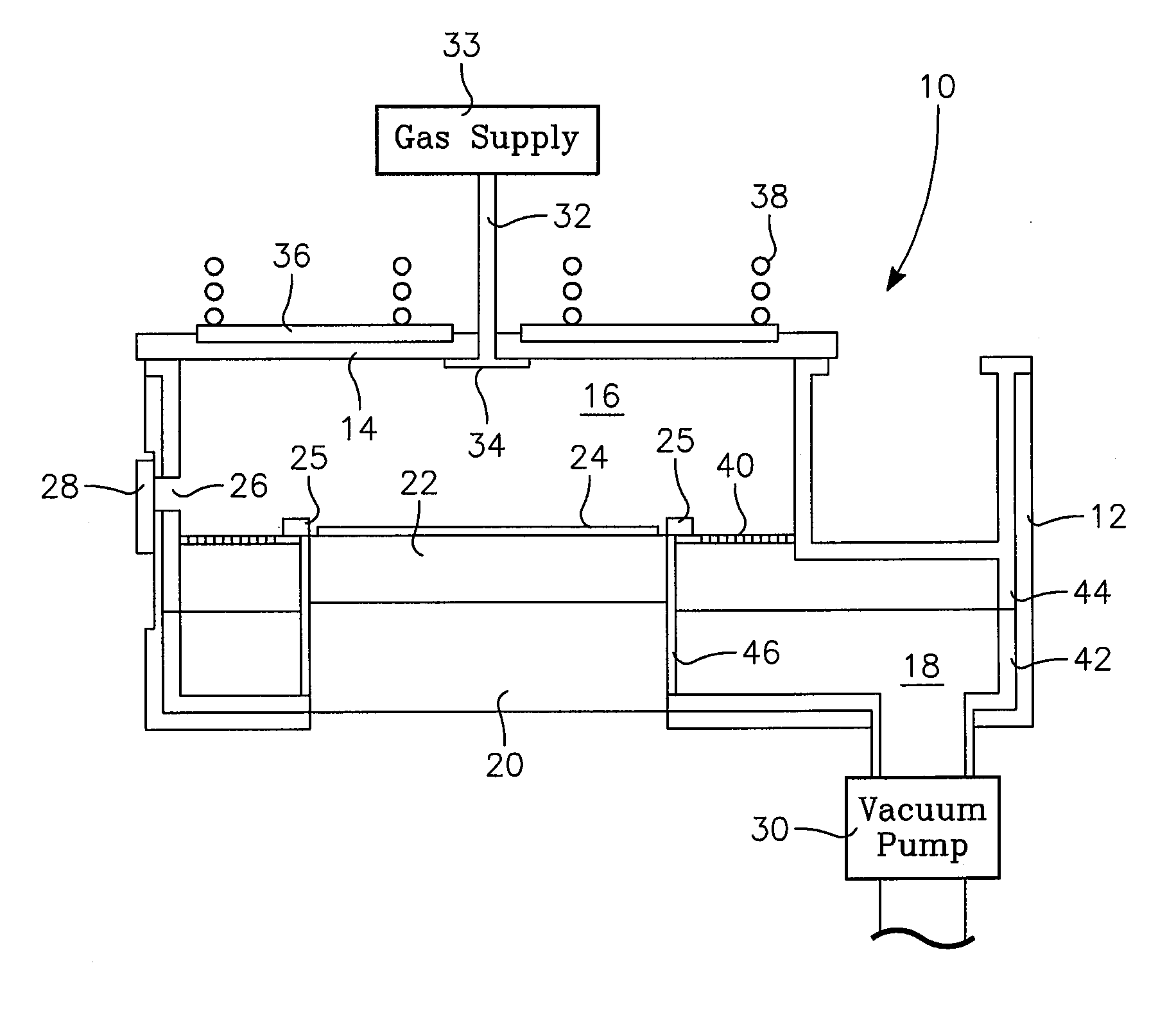Wet clean process for recovery of anodized chamber parts
a technology for anodizing chamber parts and wet cleaning, which is applied in the preparation of detergent mixture compositions, inorganic non-surface active detergent compositions, cleaning using liquids, etc., can solve the problems of fluorine-based plasma etching, material tends to deposit on the parts of the chamber, and anodizing aluminum chamber parts are particularly difficult to clean
- Summary
- Abstract
- Description
- Claims
- Application Information
AI Technical Summary
Benefits of technology
Problems solved by technology
Method used
Image
Examples
Embodiment Construction
[0023]The invention provides a method for gently but effectively wet cleaning anodized chamber parts to remove aluminum fluoride and oxyfluoride deposits. Further, the invention may include resealing a cleaned anodized part.
[0024]For cleaning, the parts need to be disassembled from the chamber. Specialized parts may need special pre-processing. For example, some of the chamber liners may include internal cooling passages. These passages need to be drained, flushed, purged, and then possibly plugged to isolate them from the subsequent wet cleaning. A pre-rinsing step in deionized (DI) water may be used to clean extraneous particles.
[0025]The process for cleaning each part is summarized in the flow chart of FIG. 9. In step 80, manual cleaning removes deposits by gentle wet scrubbing. The scrubbing is effective at removing the glass silica coating which tends to form when the etch chamber contains quartz parts. The wet agent for suspending the silica particles may be DI water. The abra...
PUM
| Property | Measurement | Unit |
|---|---|---|
| temperature | aaaaa | aaaaa |
| temperature | aaaaa | aaaaa |
| temperature | aaaaa | aaaaa |
Abstract
Description
Claims
Application Information
 Login to View More
Login to View More - R&D
- Intellectual Property
- Life Sciences
- Materials
- Tech Scout
- Unparalleled Data Quality
- Higher Quality Content
- 60% Fewer Hallucinations
Browse by: Latest US Patents, China's latest patents, Technical Efficacy Thesaurus, Application Domain, Technology Topic, Popular Technical Reports.
© 2025 PatSnap. All rights reserved.Legal|Privacy policy|Modern Slavery Act Transparency Statement|Sitemap|About US| Contact US: help@patsnap.com



